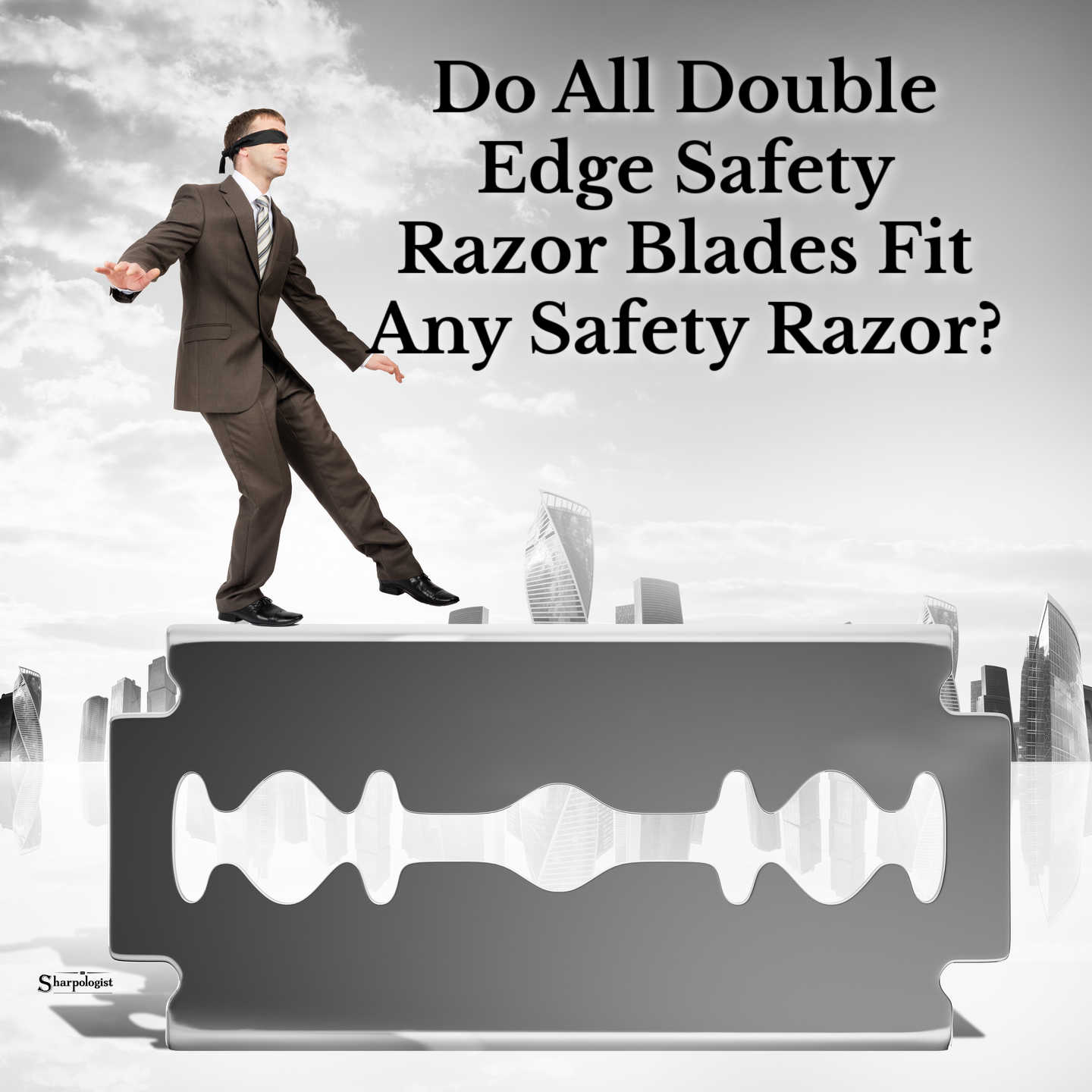
The world of double edge safety razor blades is fascinating, especially when you consider how they’ve evolved over time. Well over 100 years ago, when these blades first hit the market, they were revolutionary. Fast forward to today and we see a standardized design that most manufacturers adhere to, making it easier for shavers to find compatible blades for their razors.
Key Takeaway: Do All Double Edge Razor Blades Fit All Razors?
For almost all modern double edge (DE) razors, you can use any standard DE blade–they are interchangeable. However, if you’re using a vintage razor or a proprietary design, you may need to check compatibility.
The Standardization of Double-Edge Safety Razor Blades
Standardization means that almost all double-edge blades share similar dimensions, which simplifies the selection process. Typically a standard DE blade measures about 1.5 inches long and 0.9 inches wide and has a centered “knock out” shape that accommodates different razor head alignment and clamping styles. This uniformity allows users to switch between different brands without worrying about fit issues.
Less Common Razor Blade Styles (Injector Blades, GEM Blades)
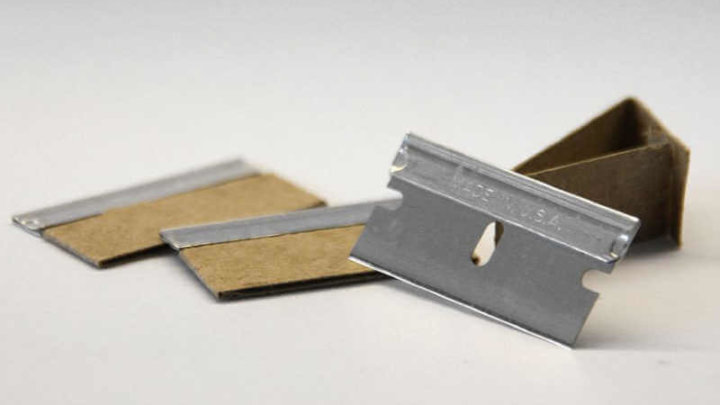
Double edge razors are not the only style of single blade razors on the market. Some other, less common designs include the Injector razor design (popularized by Schick) and the GEM razor design. These razors are both single edge (SE) designs. SE blades like these are less common and a lot of the information here still applies in their own way, but this article will concentrate on the more well-known format.
How DE Razor Blades’ Universal Fit Works Across Different Razor Brands
Many people assume that all safety razors are created equal–whether from Gillette, Wilkinson, Mühle, Feather etc.–but there are subtle differences that can affect compatibility. But despite variations in design and materials, most modern safety razors have been engineered to accommodate standard blades. The universal fitting mechanism works by ensuring that the blade sits securely within the razor, held in place by tabs or a locking system.
When you load a double-edged razor blade into a safety razor, it’s essential to ensure that it sits evenly across the entire width. If it’s not aligned correctly, you might experience a less than optimal shave. It’s this universal fitting that allows enthusiasts to mix and match their favorite blades with various razors without much hassle.
Key Measurements and Specifications of Standard Double Edge Razor Blades
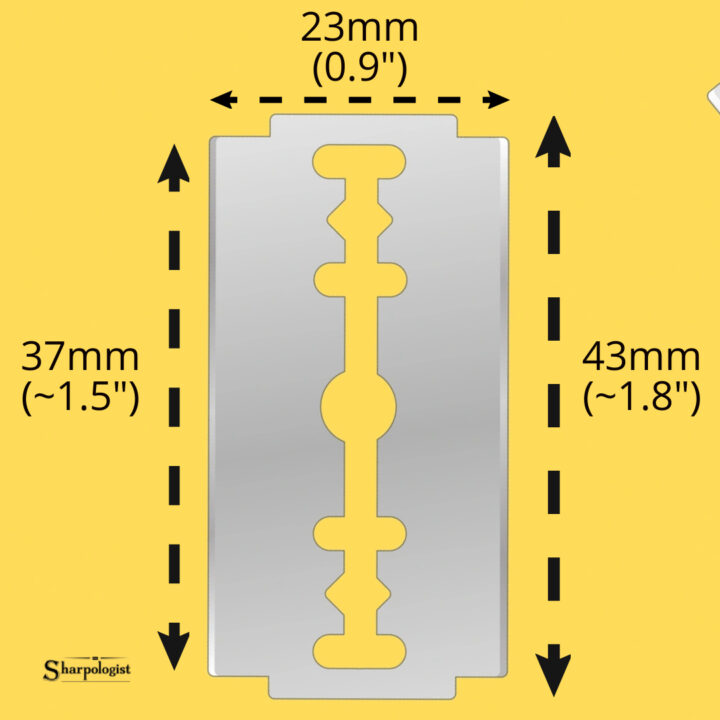
Understanding the key measurements of DE razor blades is crucial for a seamless shave. Here are some important specifications:
- Length: Standard blades typically measure around 37mm (~1.5 inches).
- Width: Most blades are about 23mm (0.9 inches) wide.
- Thickness: The thickness can vary slightly, usually falling between 0.1 to 0.2 mm.
- Tab Design: The tabs at the ends of the blades help secure them in place and vary slightly depending on the manufacturer.
- Center Knockout: Early DE blades had three separate holes (one large central hole and two smaller side holes) to fit different razor models. The modern “keyhole” or “double-slot” shape evolved to fit a wider variety of razors while still maintaining proper alignment.
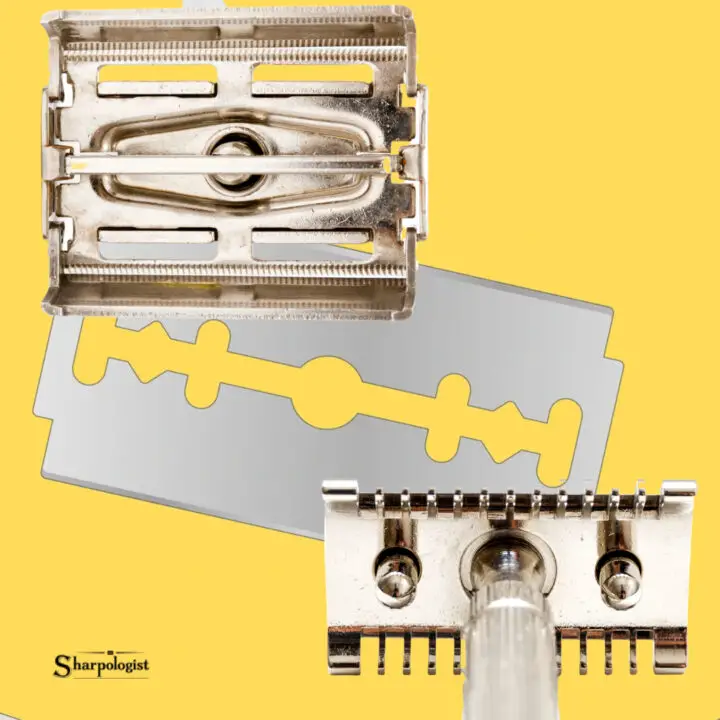
These specifications might seem insignificant, but even minor discrepancies can influence your shaving experience. It’s always wise to check compatibility before diving into a new blade or razor combination.
Blade Manufacture: How Blade Sharpness, Material, and Coating Influence Compatibility
The sharpness of the blade can actually vary quite a bit depending on brand and model. For example, Feather blades are widely known as “sharper” than many other brands. It is determined by how the blade’s cutting edge is honed, somewhat like how straight razors are sharpened.
Not all blades are created equal; the material and coating significantly influence both performance and compatibility. Double-edge razor blades are usually made of stainless steel. But variations exist, such as carbon steel blades or even ceramic options. Each material offers different performance levels and durability.
Coatings can enhance the blade’s performance, offering smoother glides and reducing drag on the skin. Common coatings include Teflon, platinum, and chrome, each bringing specific benefits. However, some coatings might not be compatible with certain razors due to their thickness or design, making it important to check compatibility before making a bulk purchase.
Common Compatibility Issues – Poor Fit And “DE-Like” Proprietary Designs
When using a safety razor, it’s crucial to ensure that the blade fits correctly. Signs of a poor fit can be subtle but noticeable during your shave.
Identifying Signs of Poor Blade Fit
Look out for:
- Uneven Shaving: If you notice that some areas are left unshaven while others feel overly scraped, it may indicate that the blade isn’t aligned properly.
- Excessive Tugging: A blade that doesn’t sit well could tug on your hair rather than glide smoothly, leading to discomfort.
- Visible Gaps: Inspect the blade and razor head closely. Any visible gaps or misalignments can compromise your shaving experience
Potential Risks of Using Incompatible Blades
Using blades that don’t match your razor can lead to several risks, including:
- Skin Irritation: An ill-fitting blade can cause nicks, cuts, or razor burn, making your shave painful rather than pleasant.
- Ineffective Shaving: You might find yourself going over the same spot multiple times, increasing the risk of irritation and ingrown hairs.
- Damage to Equipment: Incompatibility can also lead to damage to both the blade and the razor, potentially shortening their lifespan.
Proprietary Designs And Common misconceptions about razor blade compatibility
One of the biggest myths surrounding safety razors is the idea that all blades work with all razors perfectly. While most blades adhere to a standardized design, subtle differences can affect compatibility.
For example, the Hanni razor looks like it uses universal blades but it has a center post that is larger in diameter (to match the Hanni blade) and is too big for a “standard” blade.

The Hanni blades may look like any other DE blade to the casual observer. But matching them up side-by-side you can see that while the outside shape looks the same the inside cut-outs look just a bit different.
The Hanni blade is sort of compatible with some DE razors. If the razor uses a bar in the head (many twist-to-open “butterfly” razors for example) the Hanni blade will fit–though with its wider inner cut-out the blade may not be as stable as it should be.
Understanding Razor Blade Standards
Some users believe that switching between brands or types is simply a matter of preference. In reality, factors like blade dimensions, blade exposure, and gap can significantly influence your shave. Choosing a blade that complements your specific razor model is crucial for achieving the best results.
Understanding how standards are set will illuminate how these blades can be universally fitted across various brands.
Troubleshooting Common Fitting Problems
If you encounter fitting issues, here are some steps to troubleshoot:
- Check Alignment: Ensure that the blade is seated evenly in the razor. Adjust as needed.
- Inspect Blade Tabs: Make sure the tabs of the blade are securely set into the razor’s slots without forcing them.
- Experiment with Brands: If you consistently experience problems, try different brands of blades known for compatibility with your model.
Addressing these common compatibility issues ensures a smoother and safer shave, which sets the stage for selecting the right blade tailored to your specific razor type. Understanding how to navigate these challenges can enhance not just your technique but also your overall satisfaction with traditional shaving.
How to Match Blades to Different Razor Types
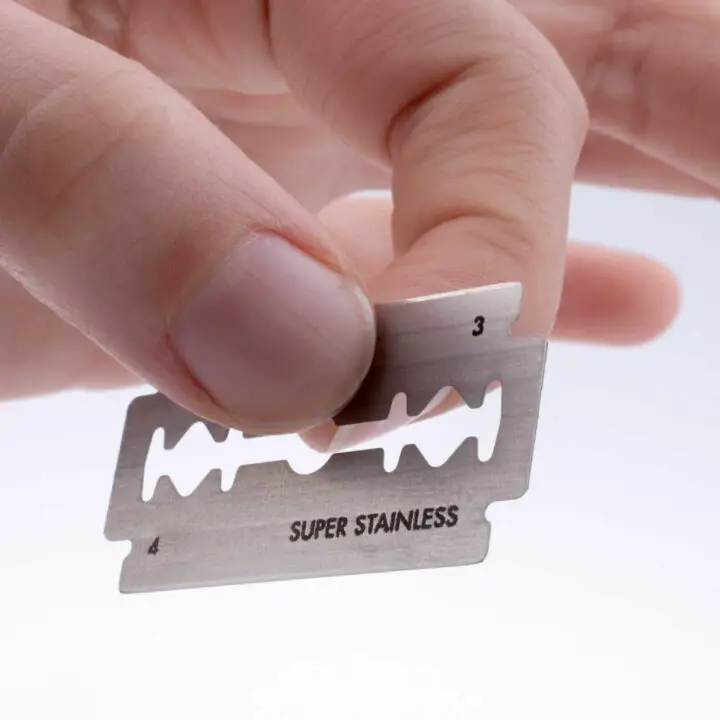
Different razor designs can influence which blades will work best. For instance, if you have an adjustable razor, you might want to try various blades to discover which one provides the closest shave with minimal irritation. On the other hand, traditional razors may have specific blade types that fit perfectly without any adjustments. Here’s how to make sure you’re picking the right blade:
- Check Compatibility: Always verify that the blade you choose is compatible with your razor model. This information is usually available on the manufacturer’s website or packaging.
- Consider Blade Exposure: The amount of blade that extends beyond the razor head affects how close the shave will be. Some razors are designed for more exposure, which requires sharper blades, while others may need milder options.
- Experiment: Don’t hesitate to experiment with different brands and types of blades. Each offers unique sharpness and comfort levels, so finding your perfect match can take some trial and error.
Tips for Testing Blade Compatibility Safely
When testing new blades, follow these tips to ensure a safe and effective experience:
- Start with a Fresh Blade: Always use a new blade for each test to avoid inconsistencies in performance.
- Shave with Care: Begin with light pressure and short strokes to assess how well the blade works with your razor.
- Monitor Skin Reaction: Pay attention to any irritation or discomfort during and after shaving. This feedback will help you decide if the blade is a good fit.
Maintenance and Safety Considerations
Handling razor blades requires a bit of finesse to ensure both your safety and the longevity of your equipment.
Best Practices for Blade Installation and Removal
When installing a new blade, always start with clean hands to avoid transferring any oils or dirt that could affect your shave. Here’s how to do it right:
- Prepare Your Razor: Make sure your razor is clean and dry before you begin.
- Handle with Care: Always hold the blade by its edges—never touch the sharp sides directly.
- Align the Blade: Place the blade in the razor’s head, ensuring it sits evenly and securely in the provided slots.
- Tighten Securely: Fasten the razor head without over-tightening, as this can warp the blade.
Removing the blade is just as crucial. Use the same care when taking it out, and dispose of used blades in a designated sharps container for safety.
Summing Up
While the majority of double edge blades can fit a wide range of razors, not all combinations yield the same results. Nuanced differences in blade design–including center knockout shape, edge angles, and coatings–contribute to varying levels of comfort and efficiency during shaving. Some brands may offer specialized blades that align better with specific razor models, potentially improving the shave quality. Ultimately, finding the right blade and razor pairing is a personal journey; don’t hesitate to try different combinations until you achieve your best shave.
